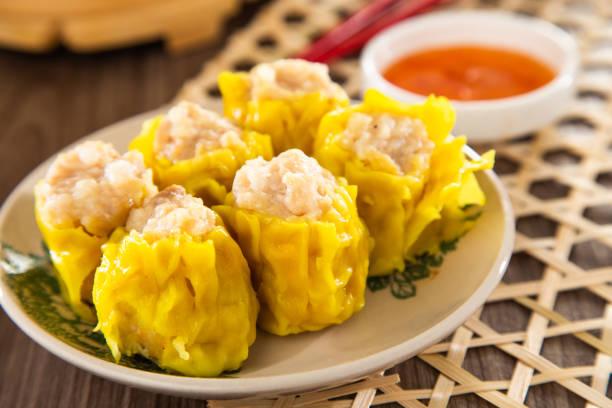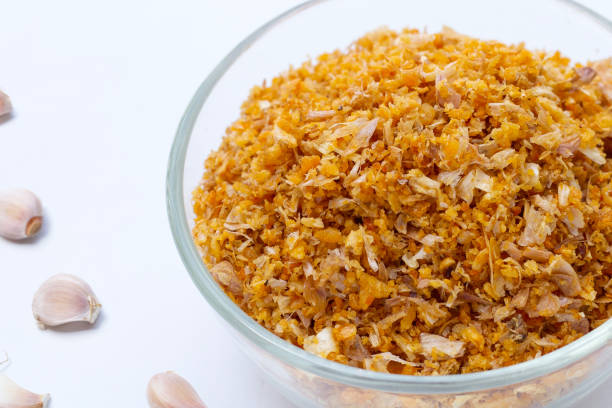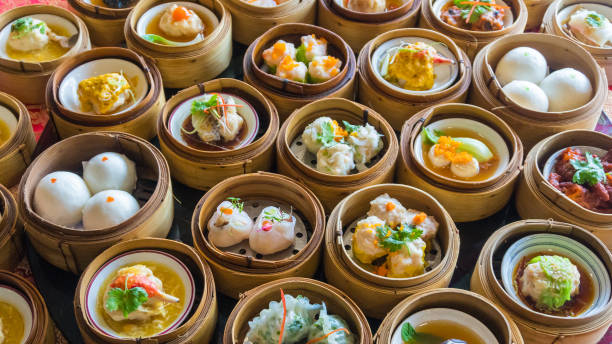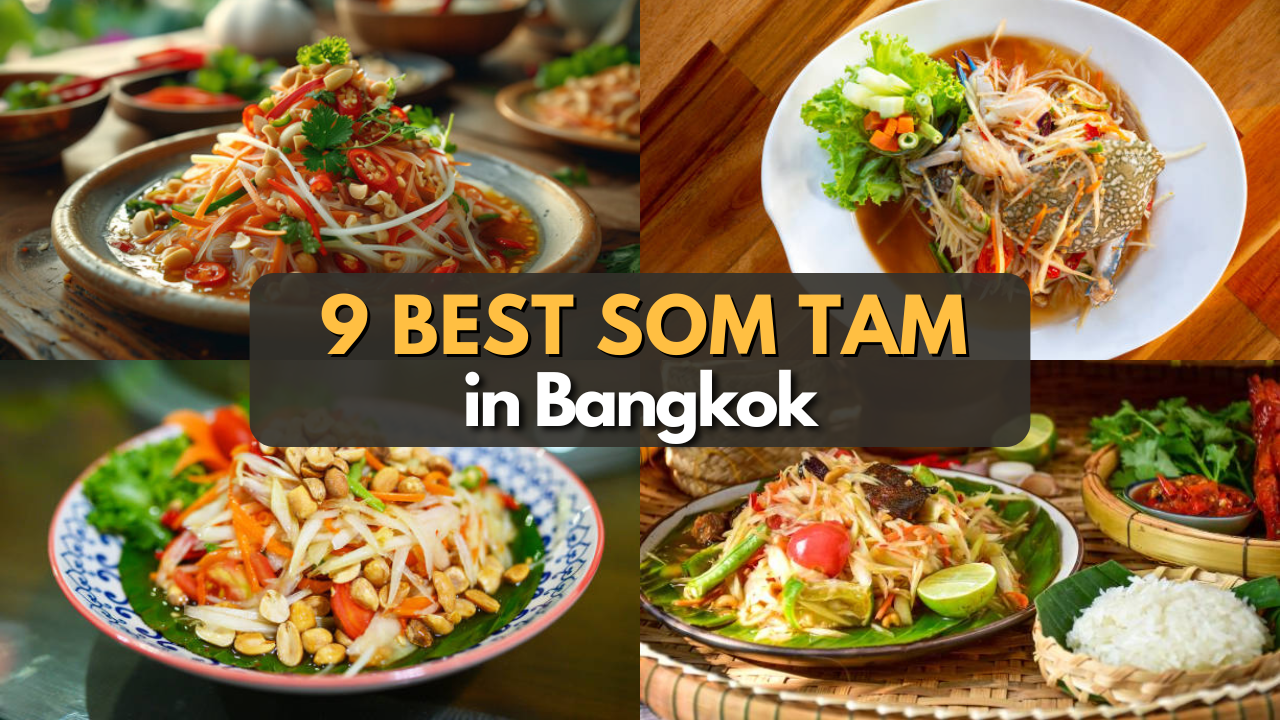
Kanom Jeeb

Kanom jeeb (ขนมจีบ) is a Thai version of steamed dumplings, similar to Chinese shumai but with a Thai twist. If you’ve ever wondered “what does Thai dumpling called?”, the answer is kanom jeeb. Popular in street markets, dim sum restaurants, and family kitchens, these dumplings are often filled with seasoned pork, shrimp, or chicken, wrapped in thin wonton skins, and steamed to perfection.
Also, known internationally as Thai shumai, kanom jeeb offers a juicy, savory bite with a touch of sweetness that makes it uniquely Thai.
Main Ingredients
Traditional Kanom Jeeb recipes use simple yet flavorful ingredients:
Wonton wrappers – Thin yellow pastry sheets, slightly chewy after steaming.
Ground pork – The most common filling base.
Shrimp or crab meat – Adds sweetness and extra texture.
Garlic & coriander root – Classic Thai aromatics.
Soy sauce & oyster sauce – For savory depth.
Sugar & white pepper – Balances flavors with subtle sweetness and mild heat.
Carrot bits or crab roe – Often placed on top for decoration and color.
Kanom Jeeb vs. Shumai
While kanom jeeb is sometimes called Thai shumai, there are key differences from its Chinese cousin.
Kanom jeeb:
- Lighter, more aromatic seasoning with fish sauce and white pepper
- Often includes fresh herbs like cilantro stems
- Slightly sweeter profile to balance the salty elements
- Usually garnished with julienned carrots or orange crab roe
- Served with distinctly Thai dipping sauces
Shumai:
- Heavier on soy sauce and cooking wine
- Focus on umami depth rather than aromatic brightness
- Often includes bamboo shoots
- Typically garnished with a single green pea or carrot dot
- Paired with black vinegar-based dipping sauces

Fried garlic and garlic oil often make kanom jeeb sauce distinct by adding a rich, aromatic flavor and crunchy texture.
Kanom Jeeb Sauce
The classic dipping sauce for kanom jeeb is a sweet-savory blend that enhances the dumplings’ flavor:
Dark soy sauce – Gives rich color and depth.
Sugar – Adds sweetness to balance the saltiness.
Vinegar – For mild tanginess.
Fried garlic oil – A signature Thai touch.
Fresh chilies – Optional, for spice lovers.
Some vendors also serve kanom keeb with nam jim jeaw (a tangy chili dip) for extra heat.
Kanom Jeeb Recipe
Servings: 20 dumplings | Time: 30 minutes
Ingredients:
20 wonton wrappers
250g ground pork
50g shrimp, minced
2 cloves garlic, minced
1 coriander root, minced
1 tbsp soy sauce
1 tbsp oyster sauce
½ tsp sugar
¼ tsp white pepper
Chopped carrot for garnish
Instructions:
Make the filling – Mix pork, shrimp, garlic, coriander root, soy sauce, oyster sauce, sugar, and pepper in a bowl.
Assemble dumplings – Place a teaspoon of filling in the center of each wrapper, fold edges upward, and pinch lightly, leaving the top open.
Garnish – Place a tiny carrot cube or crab roe on top.
Steam – Arrange dumplings in a steamer basket lined with parchment. Steam for 8–10 minutes until fully cooked.
Serve – Drizzle with fried garlic oil and serve with kanom jeeb dipping sauce.
Calories
Calories can vary based on ingredients, but on average:
One kanom jeeb (pork version) – ~50–60 calories
Shrimp or chicken version – ~40–50 calories
For a lighter option, you can use lean meats or skip the fried garlic oil.

Thai-style dim sum features an array of bite-sized dishes with a unique local twist.
Dim Sum in Thailand
Dim sum is a part of Thailand’s food culture, blending Cantonese tradition with local flavors. You’ll find it everywhere from high-end hotels to humble street-side stalls. Thai-style dim sum often features unique fillings like crab meat with sweet chili sauce, minced pork with coriander, and dumplings topped with salted egg yolk. What truly makes it stand out, however, is the dipping sauces. Instead of just soy sauce or chili oil, Thai dim sum is often paired with a sweet, tangy, and slightly spicy sauce made from vinegar, sugar, fresh chilies, and fried garlic oil.
If you’re wondering where to eat dim sum in Bangkok, the city’s Chinatown (Yaowarat) is obviously the place to go for some of the best dim sums. Also, check out our list of the best dim sum restaurants in Bangkok to explore the finest spots.





